
Best Resume Outline Examples to Get a Job in 2023
How to make a resume outline. Learn a basic format that is simple and proven to help you create a successful resume template. See examples and read more!

Submit a best of breed job application with expert veterinary resume tips to land the best vet jobs. Here’s how to write a veterinarian resume that’s the cat’s pajamas.
You’re the best darn doggy doctor out there. You diagnose distemper and reassure worried owners with ease.
But in the dog eat dog world of vet recruiting your skills need to be definitively diagnosed. To do that you need a veterinarian resume as brilliant as the one below.
Want to save time and have your resume ready in 5 minutes? Try our resume builder. It’s fast and easy to use. Plus, you’ll get ready-made content to add with one click. See 20+ resume templates and create your resume here.
Sample resume made with our builder—See more resume samples here.
Considering similar jobs in your industry? See these related resume guides.
Claude Chien
804-2860-443
Professional Summary
Associate veterinarian with 7+ years of experience. Specialist in companion animal emergency and critical care and ACVECC diplomate. Seeking to leverage my skills to contribute to high quality animal medical care in a challenging environment at Independence Animal Hospital.
Work Experience
Green Street Veterinary Clinic, Richmond, VA
Associate Veterinarian
January 2012–Present
Education
2003–2006, BSc in General Biology
Virginia Polytechnic and State University, Blacksburg, VA
2006–2009, DVM
Virginia-Maryland College of Veterinary Medicine, Blacksburg, VA
2009-2011, Diploma in Emergency and Critical Care
ACVECC approved residency at Merrimac Animal Hospital, VA
Certification
Skills
Volunteering
This is how to write a job-winning veterinarian resume:
Veterinarians diagnose health problems in animals, prescribe medication for animal illnesses, carry out vaccinations, treat injuries, perform surgery and give owners advice. The purpose of your veterinarian resume is to show your expertise in veterinary medicine in your field of specialty.
It’s a ton of responsibilities—
And somehow, you need to communicate all of them in the seven seconds recruiters spend looking at each resume. To turn your resume into hiring manager catnip you need to follow these resume formatting rules.
Finally, is a one or two-page resume better? If you’ve got lots of veterinary experience then two pages is fine. If not, then aim for a one-page resume.
Read more: Best Resume Layout Template
Now we’re all prepped, let’s start the resume surgery.
The resume summary and resume objective are different breeds of the same beast. The humble domestic professional resume profile.
They’re the first section of your resume for a veterinarian and should be short and simple, 3–4 sentences. It’s what your pharma sales rep would call an elevator pitch.
If you have more than 2 years of veterinary experience use a career summary.
If you’re a new grad then go for a veterinary career objective.
And when I referred to being suited to the job and checking out the job description I didn’t just mean being a vet. You have to make it specific to each job you apply for. It’s called targeting your resume.
Now let’s perform a check-up on your work experience section.
Your veterinary resume experience section needs to be scalpel-sharp.
Find out more: Work History on a Resume
A vet undergoes the same rigorous education as a human MD. Arguably it’s an even more challenging discipline because your patients can’t tell you what’s wrong.
You can’t even legally practice without an education, so this section of a resume for a veterinarian has to be flawless.
If you’re a fresh grad, you’re probably wondering about putting your GPA on your resume. The answer is simple. Only include it if it’s 3.5 or higher and you graduated in the last two years.
Pro Tip: Include a separate section immediately following your education for your job-specific certifications, and title it Veterinary certifications. This will include your NAVLE and any other licenses specific to your state jurisdiction.
You’ve got one of the most skilled jobs out there. Practicing medicine on multiple species is impressive. So be sure to make this fully known on your veterinarian resume.
Here’s how—
When making a resume in our builder, drag & drop bullet points, skills, and auto-fill the boring stuff. Spell check? Check. Start building a professional resume template here for free.
When you’re done, Zety’s resume builder will score your resume and tell you exactly how to make it better.
Your veterinarian resume is in a stable condition and improving, but we’re not done with treatment just yet. Show off your unique skills with extra sections and give your resume a powerful boost.
Extra sections are particularly important for new grad vets. Without work experience you need other ways of proving you’re a great candidate. Here’s how.
Pro Tip: Volunteering is a particularly powerful extra section. 82% of recruiters are more likely to choose a candidate with volunteering experience. For vets there are a wealth of opportunities to choose from. Just google “volunteering for veterinarians” to see what’s out there.
Ever wondered just how important a cover letter is? Put it this way. Almost half of recruiters will reject your application if you don’t include one.
Follow these rules to write the perfect cover letter for your veterinary resume.
Then there’s that other age-old question. What’s the right cover letter length? Here’s your answer.
One more tip, always follow up on your job application. It’s often the trick to get the interview.
Plus, a great cover letter that matches your resume will give you an advantage over other candidates. You can write it in our cover letter builder here. Here's what it may look like:
See more cover letter templates and start writing.
That’s it. The prescription for veterinary resume success.
Being a vet is highly specialized. Are there any insider tips and tricks you want to share? Have I left anything out? Let me know in the comments section.
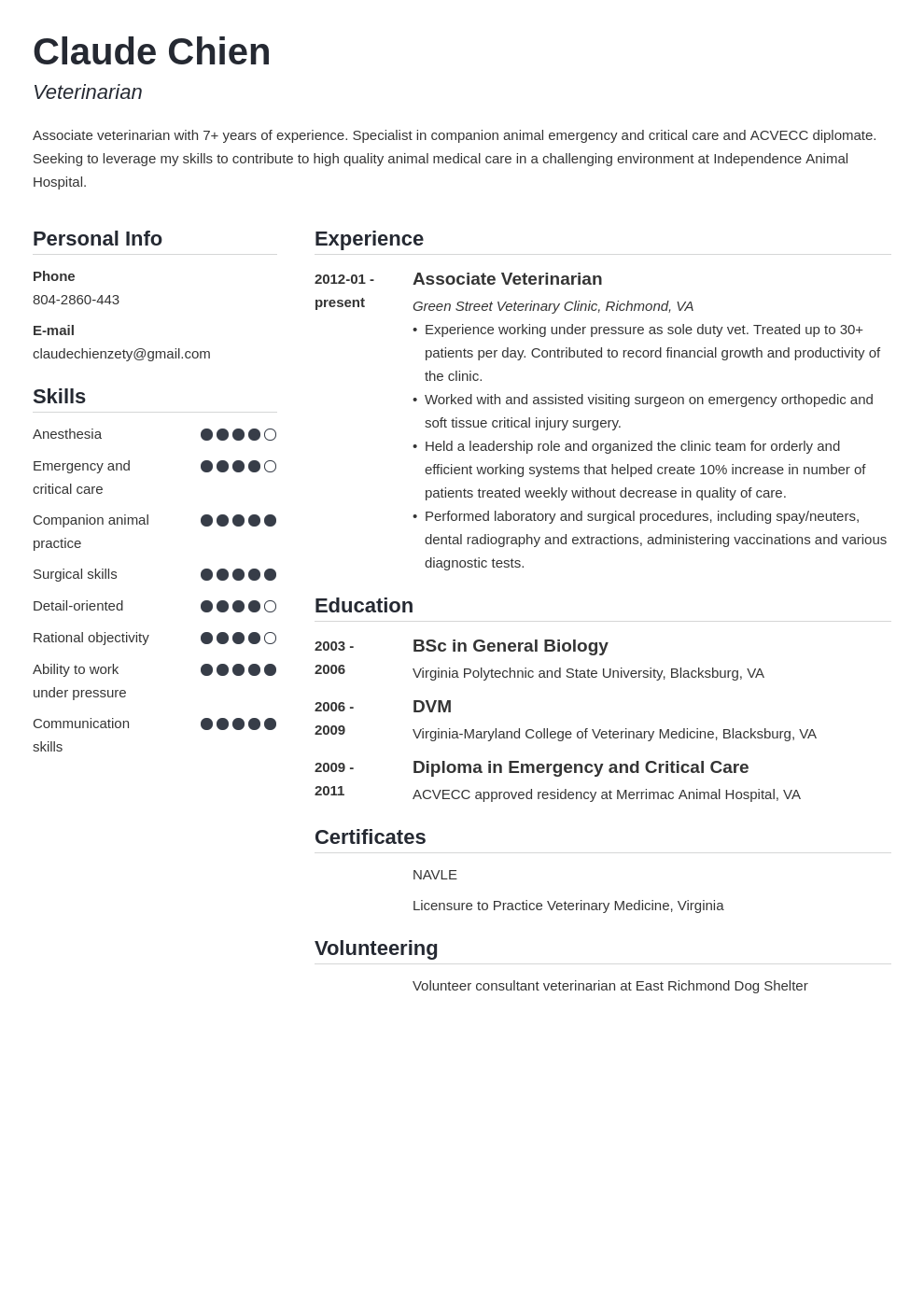
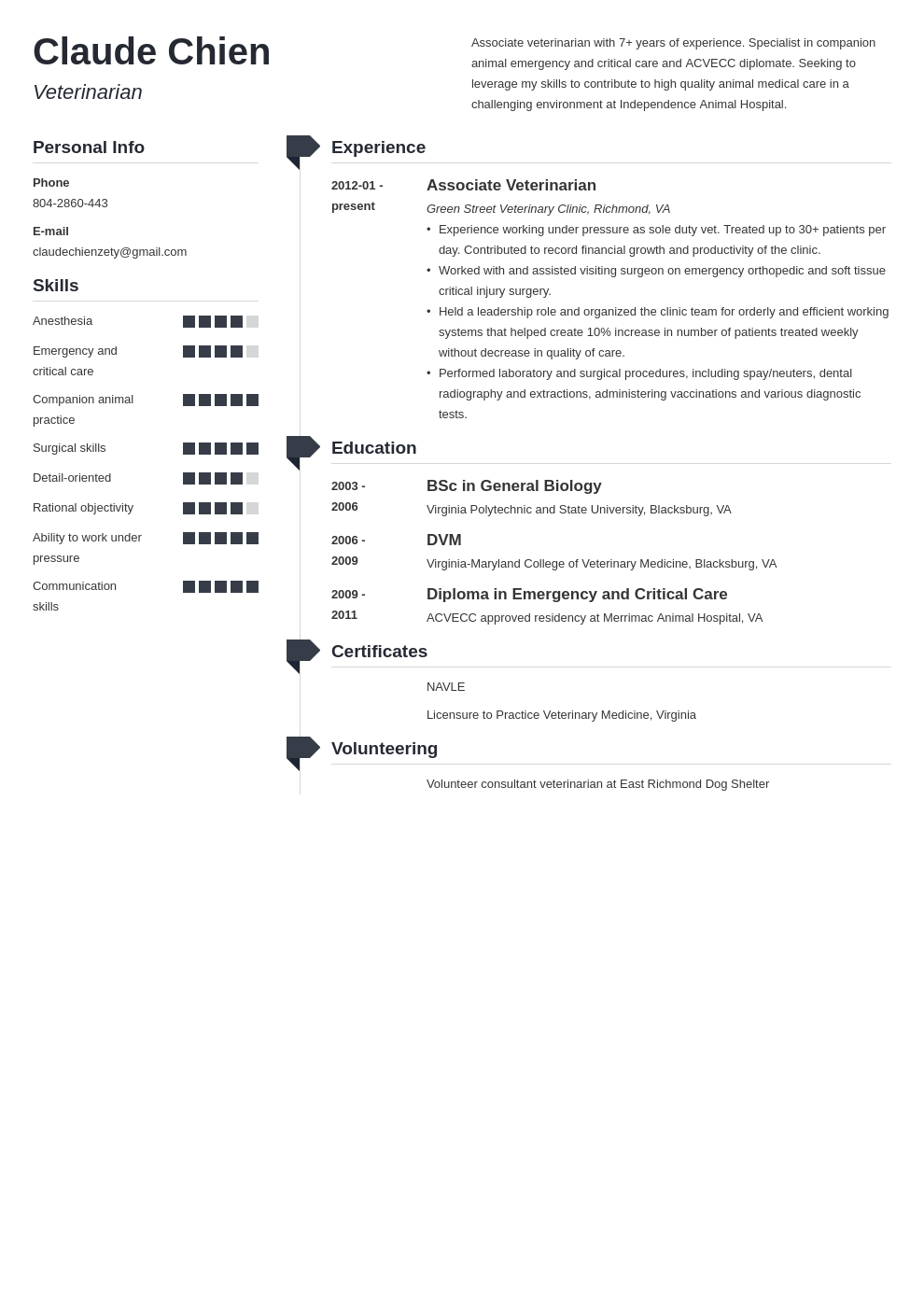
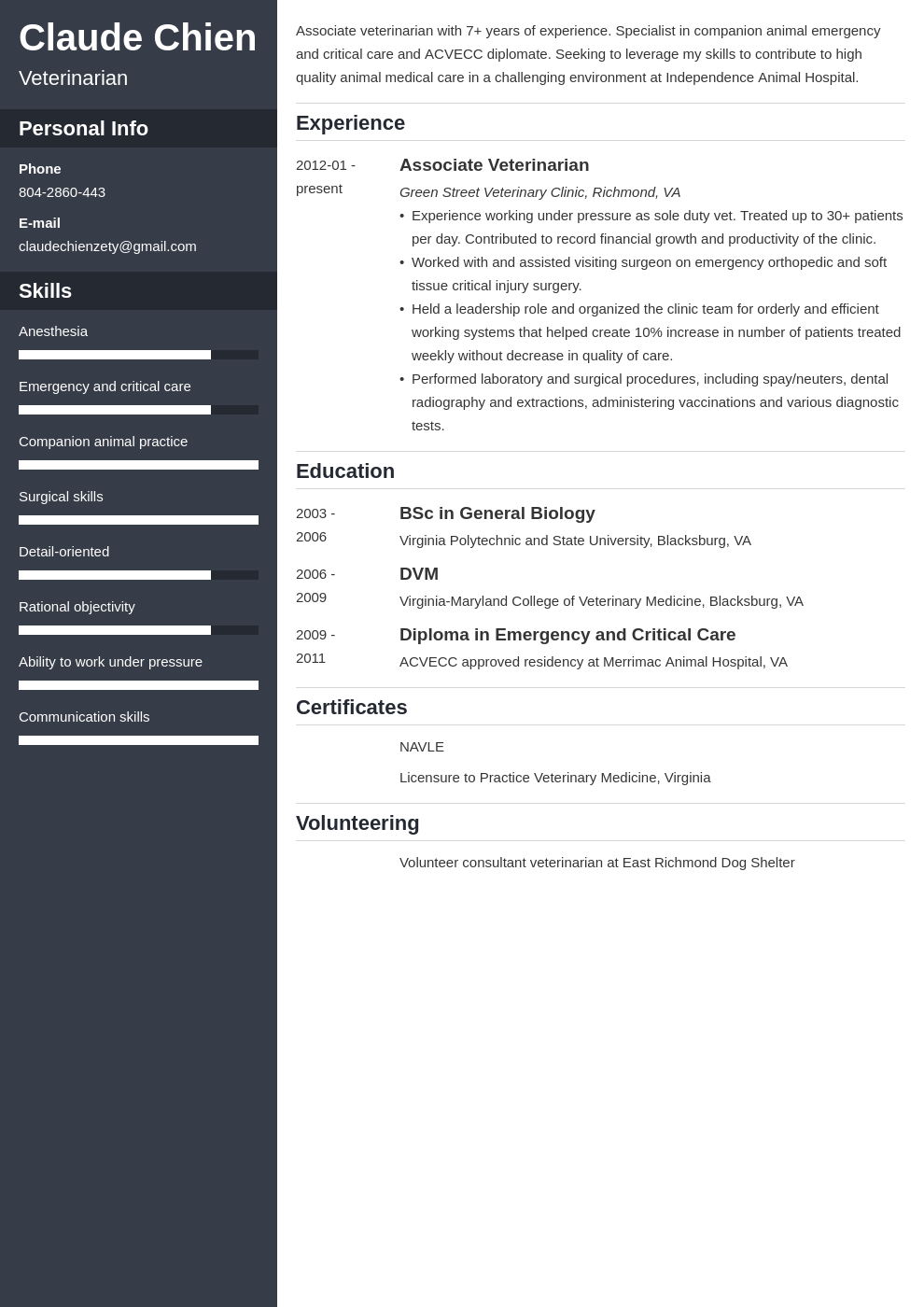
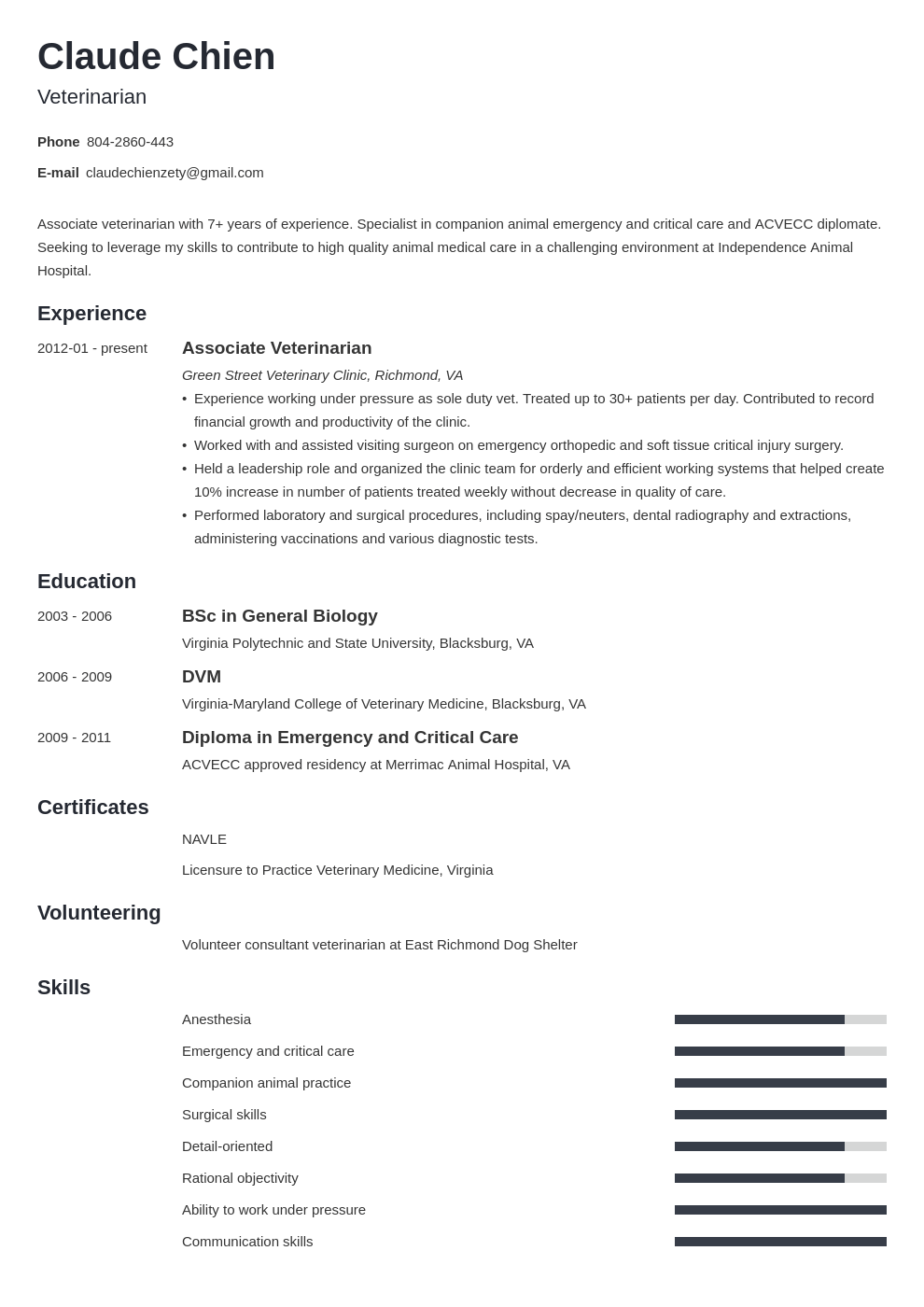

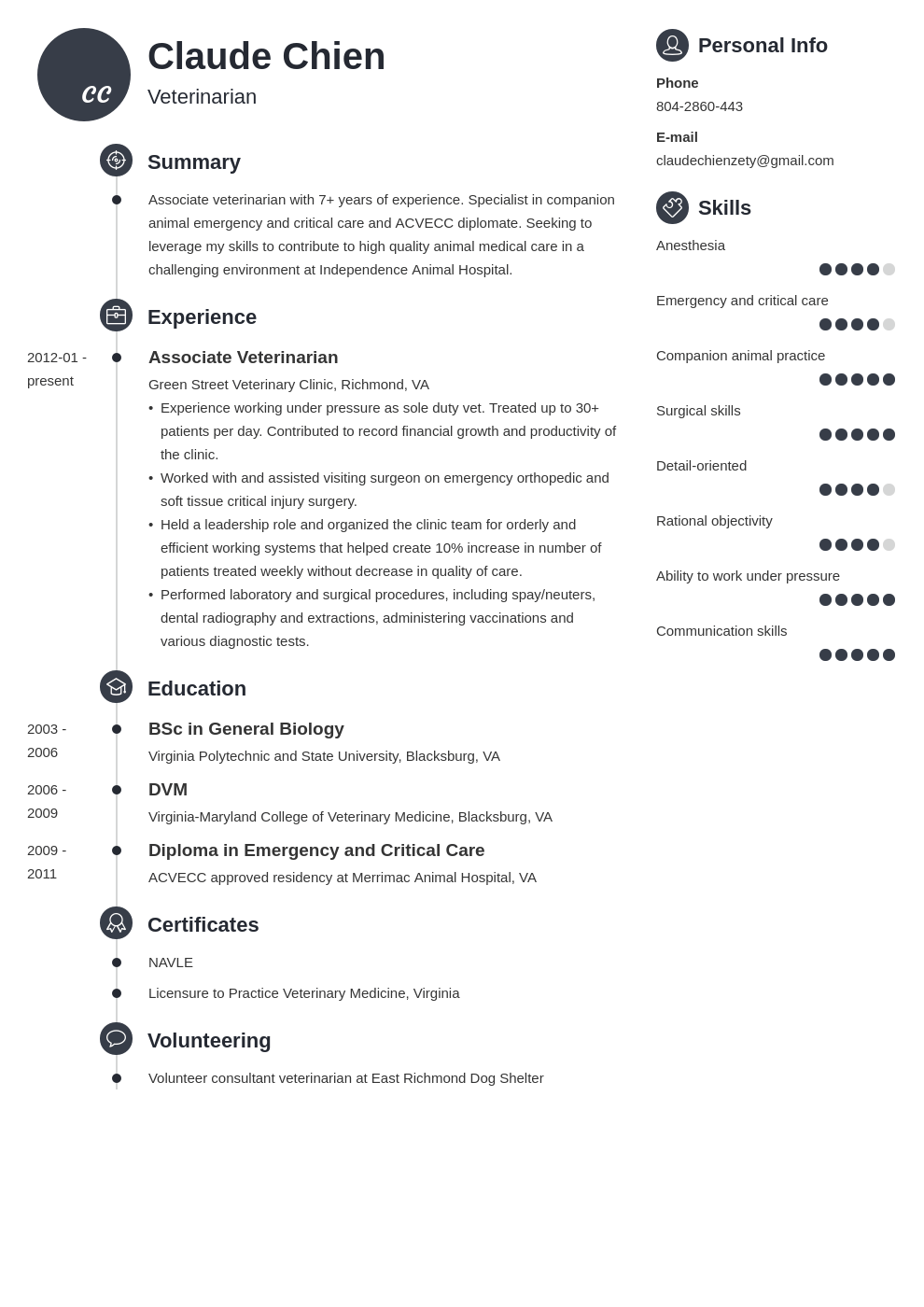

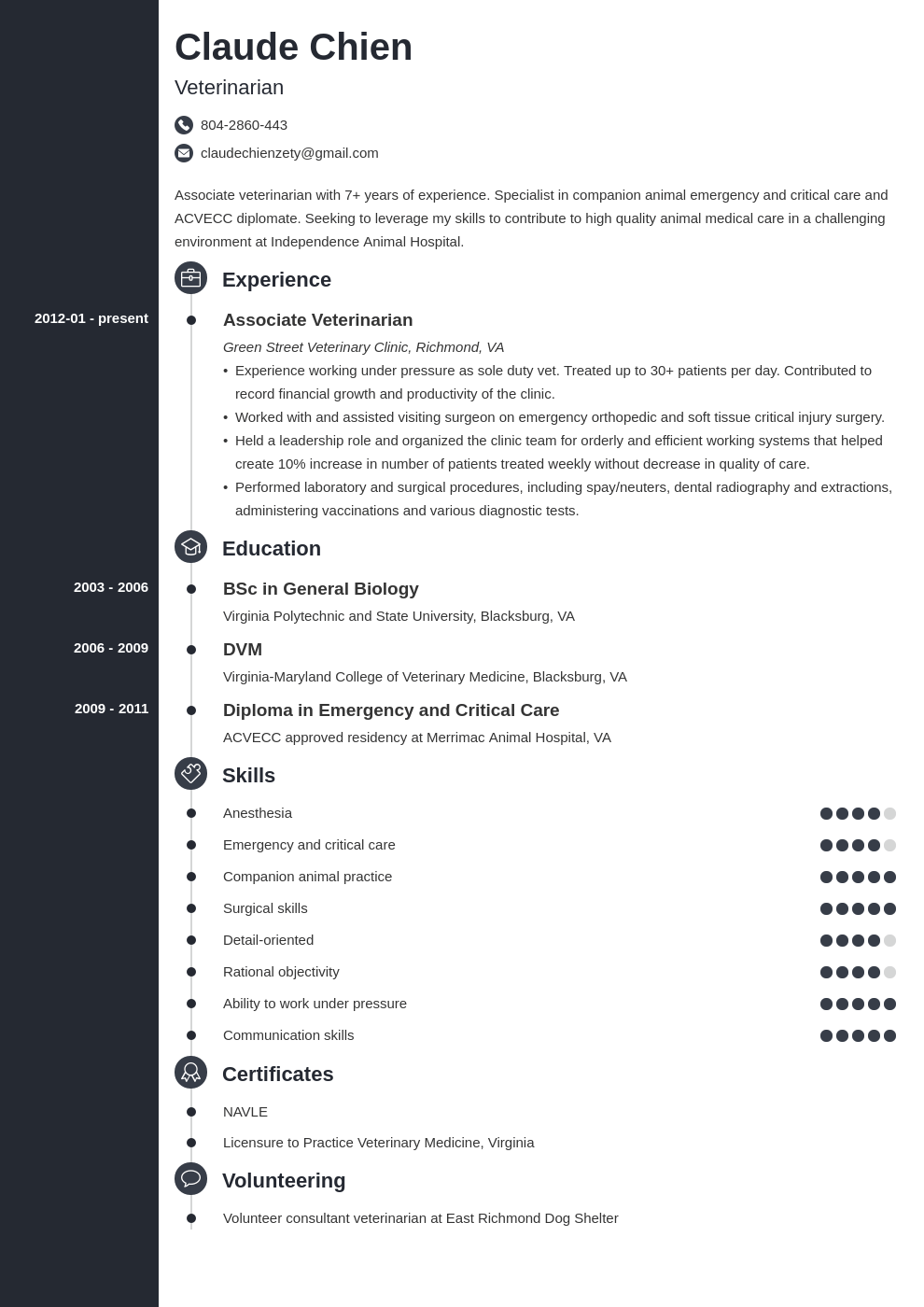


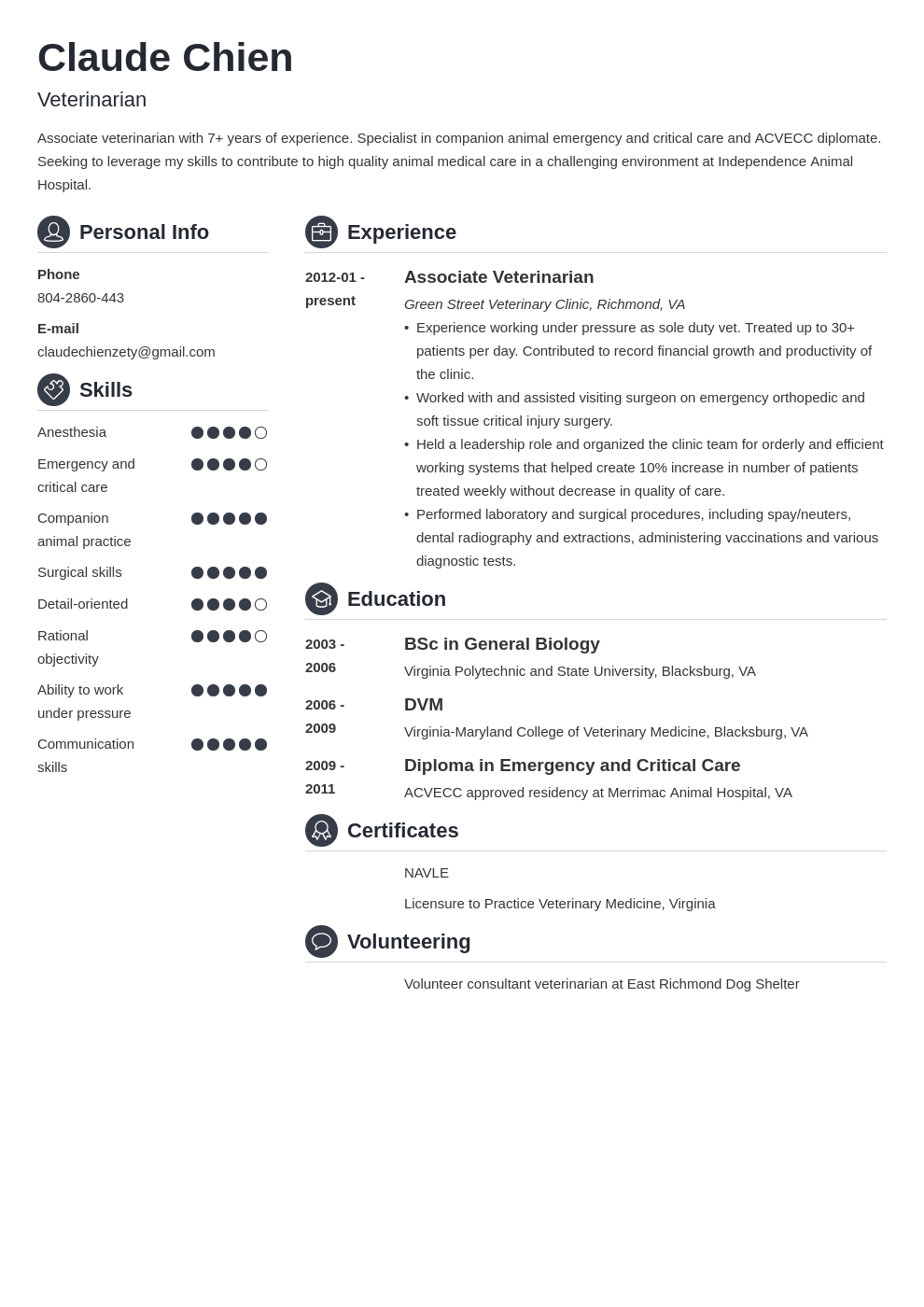
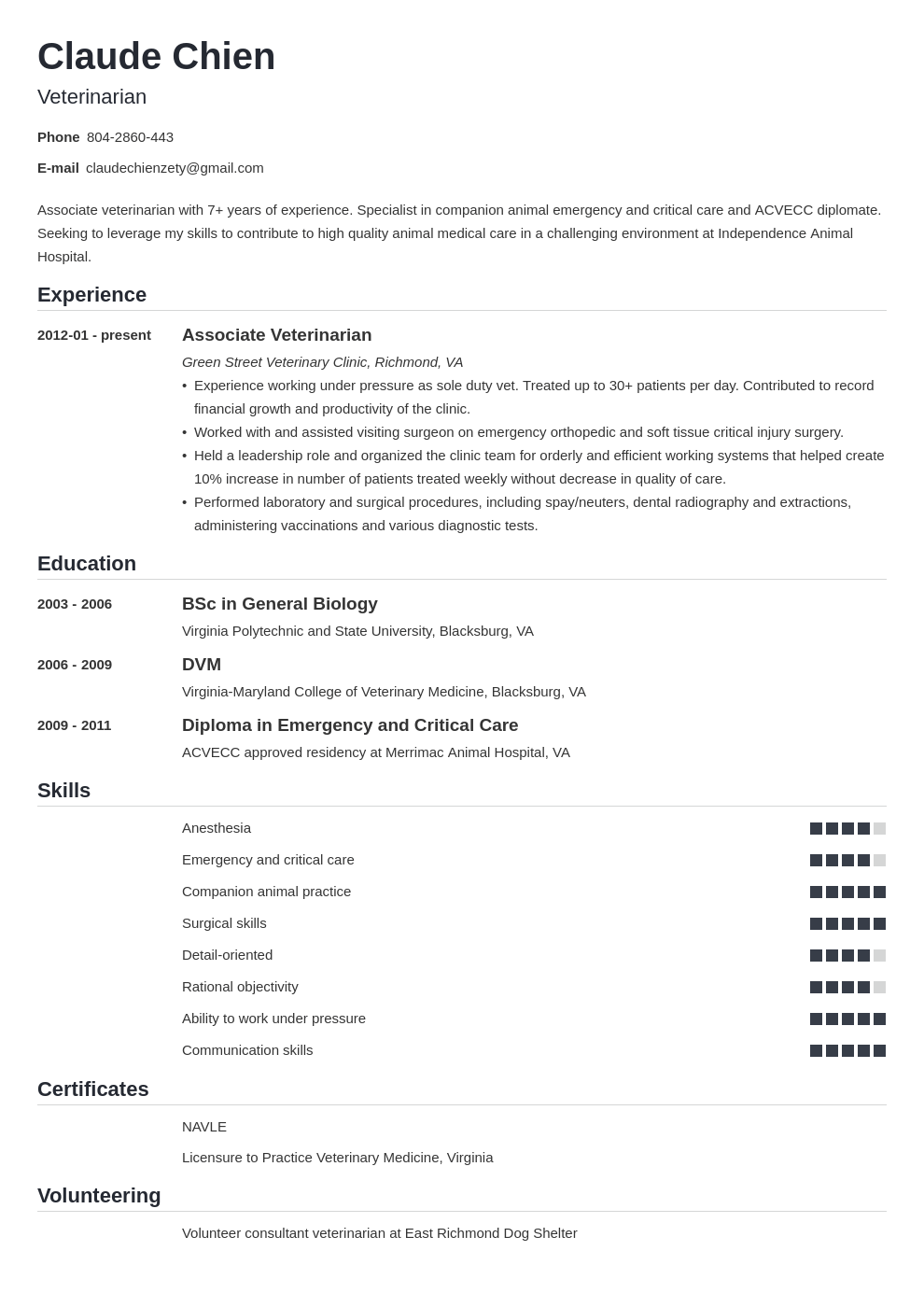
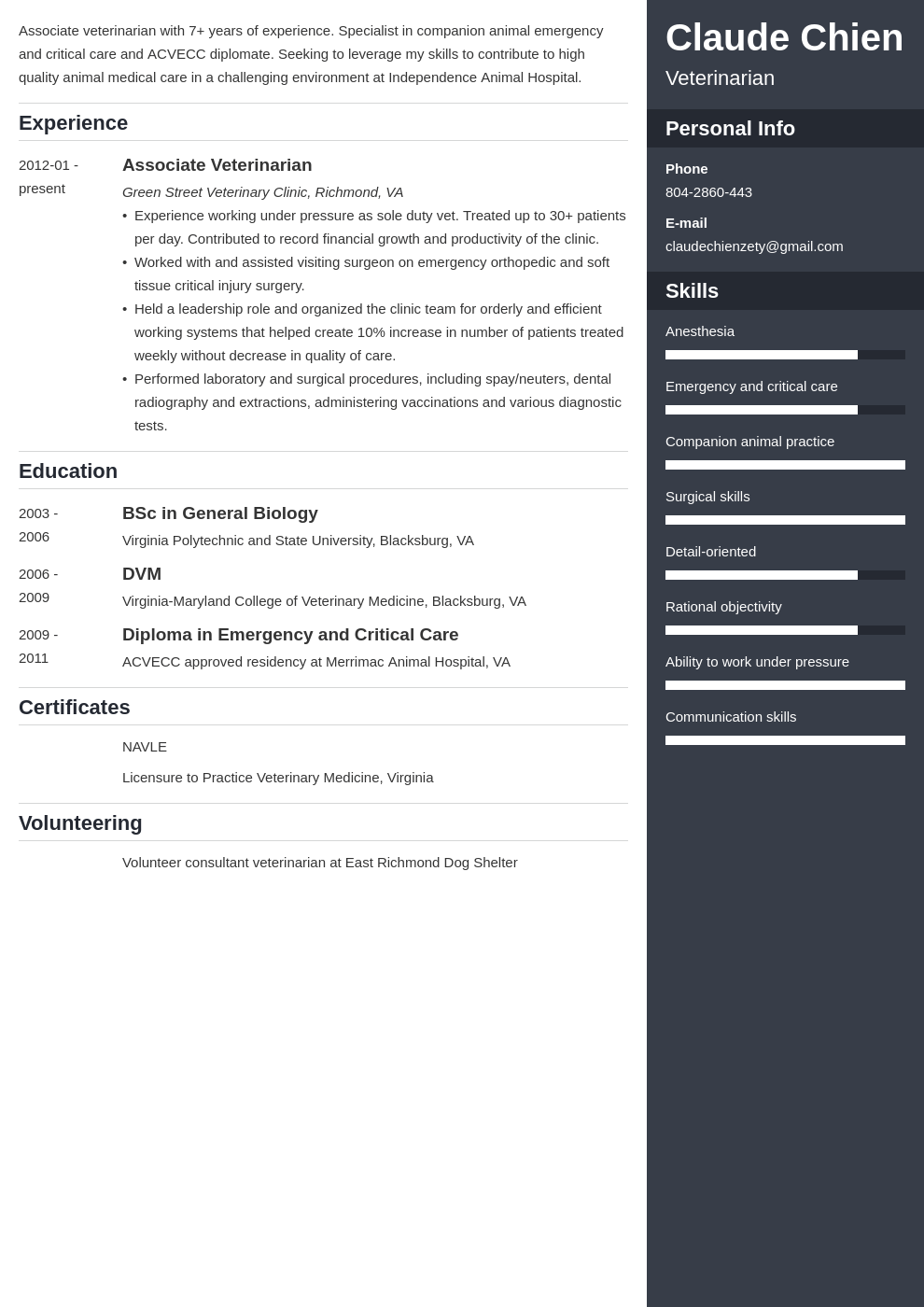

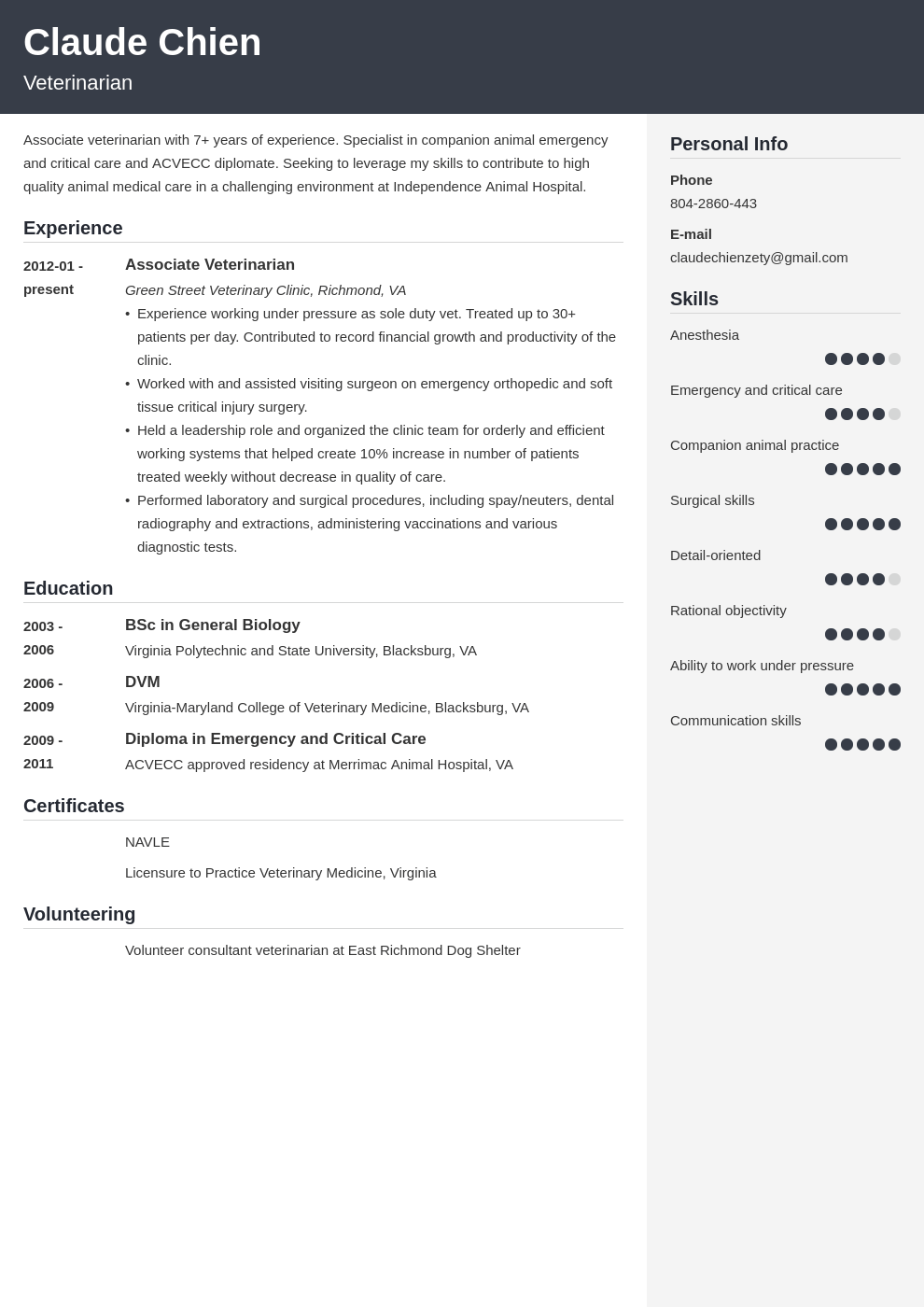
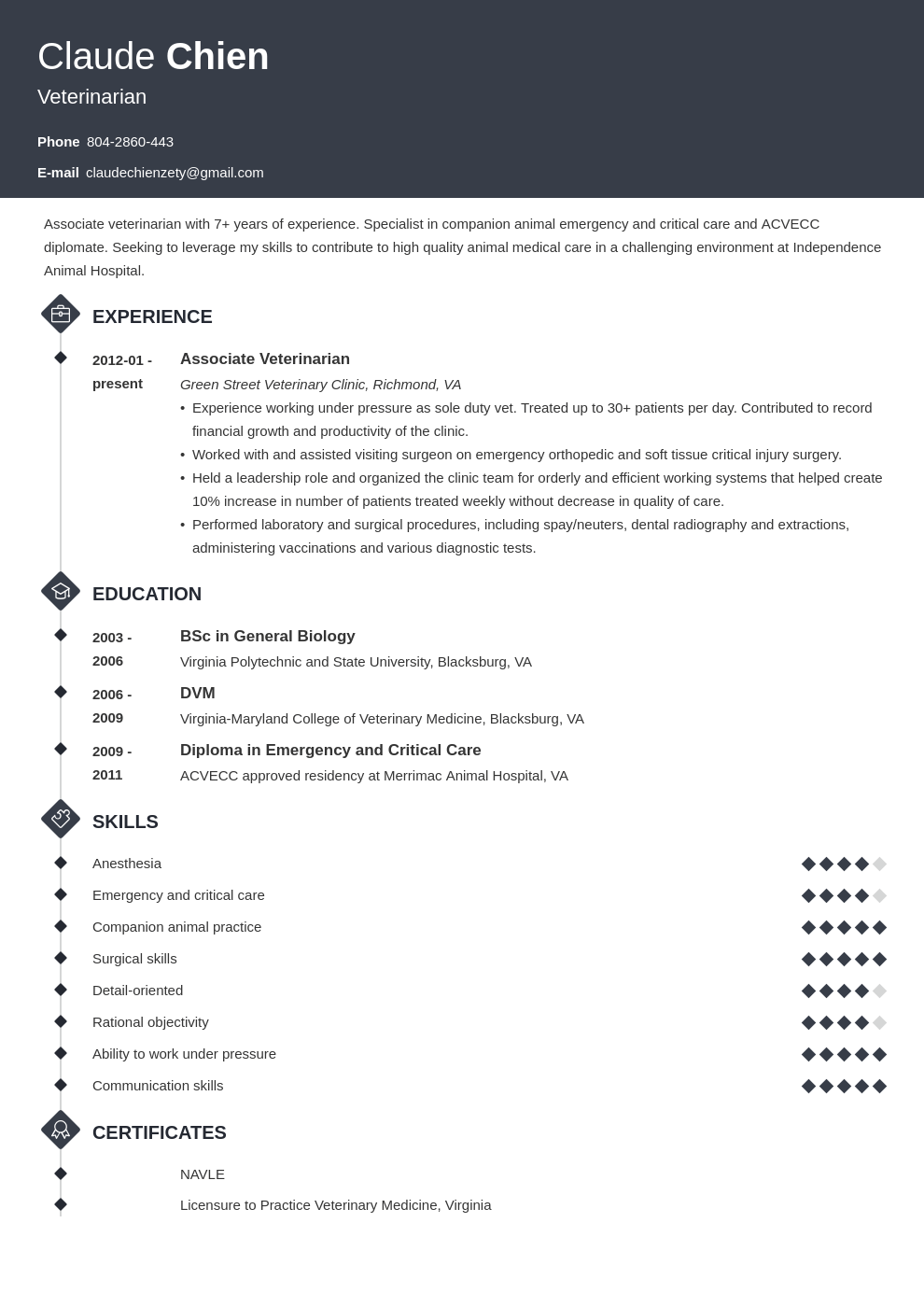
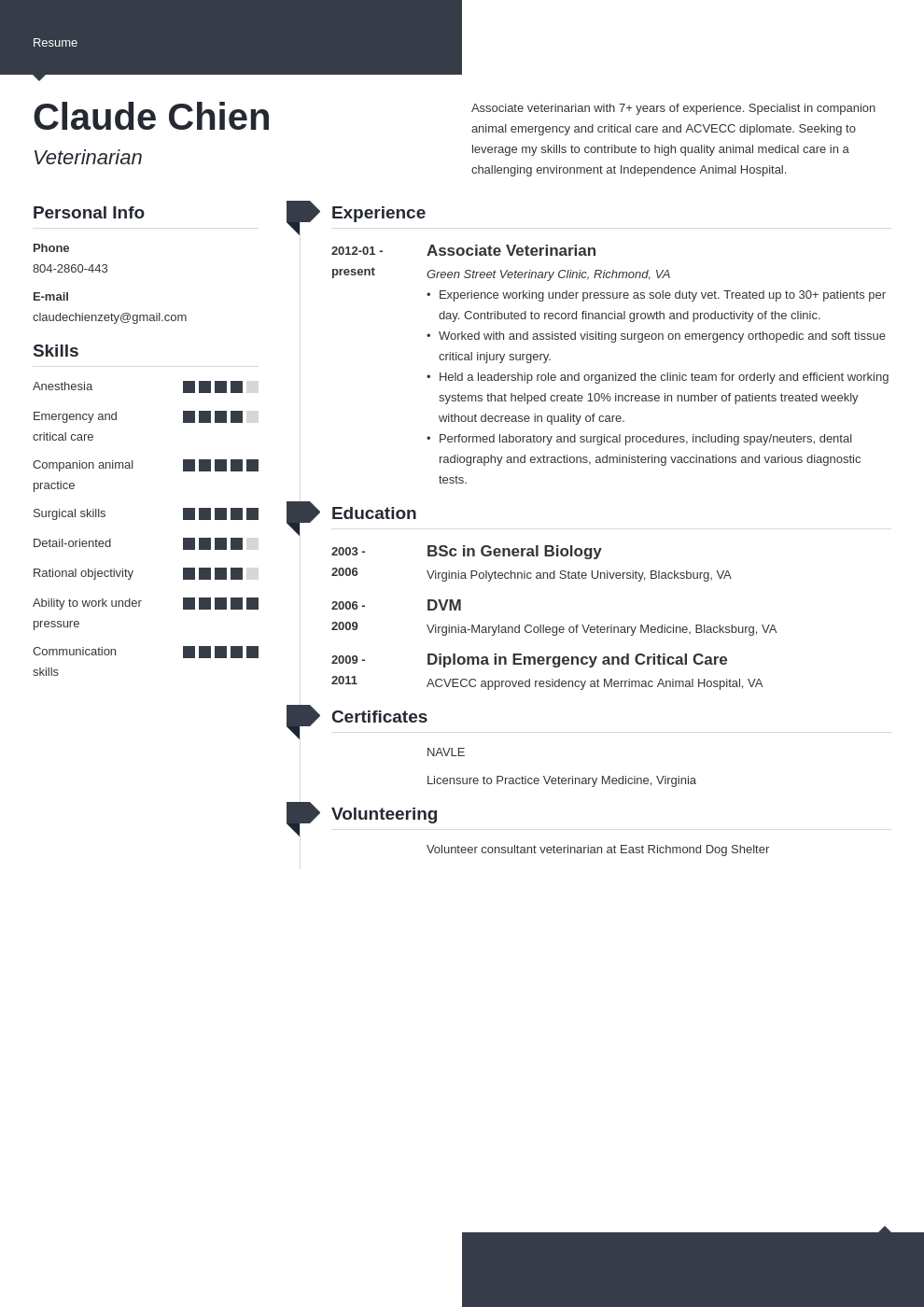
How to make a resume outline. Learn a basic format that is simple and proven to help you create a successful resume template. See examples and read more!
These are not the same, but we'll sort that out. Just bear in mind you need both—
The key parts of a resume are your contact information, resume profile, work history, skills, and education. You can add extra elements such as languages or certifications.

